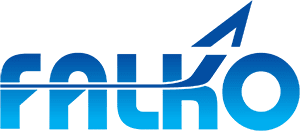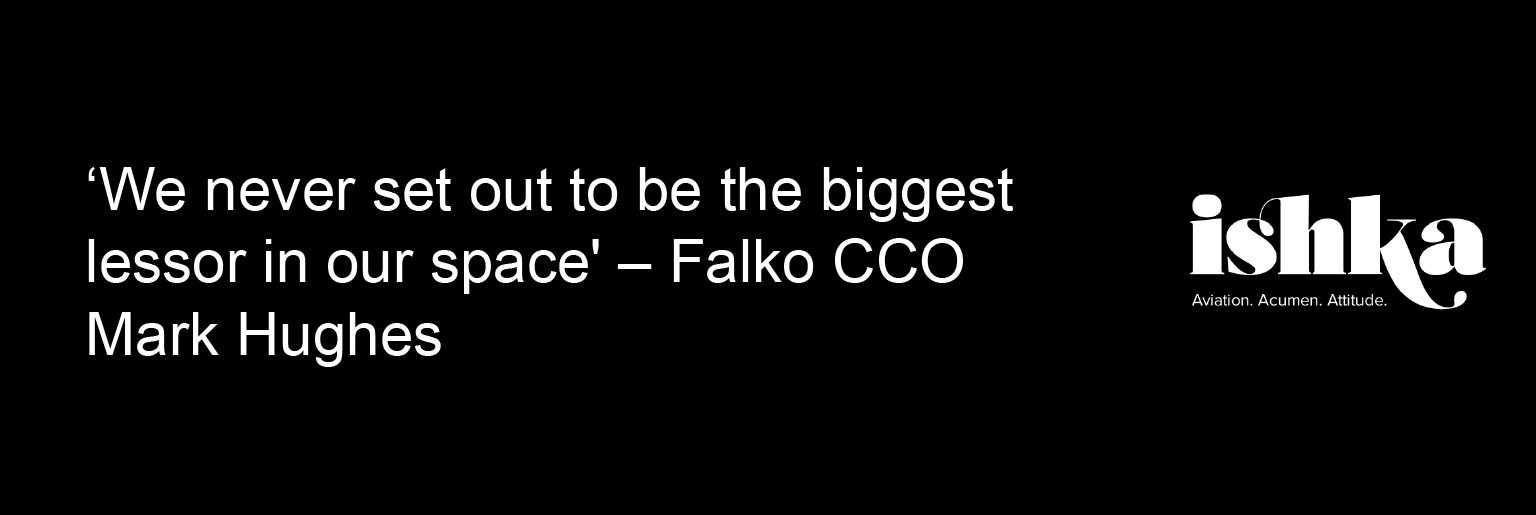Regional aircraft lessor and asset manager Falko was recently acquired by US firm HPS Investment Partners, LLC. The transaction, which closed in December, came at the end of a busy few years for Falko – from an acquisition by Chorus back in 2022 to shifting dynamics in the regional aircraft space. But what does the change in ownership mean for the lessor? Falko’s Chief Commercial Officer Mark Hughes talks to Ishka about the firm’s new owners, its strategy, and how it became a leader in the small aircraft space.
Since beginning life in 2011 with a management buy-in of BAE’s Asset Management division, backed by Fortress Investment Group, Falko has grown to own or manage a portfolio of 266 aircraft – as of the end of Q3 2024.
“We never set out to be the biggest lessor in our space,” Hughes tells Ishka. “That’s never been a corporate objective. It has happened through a combination of decisions we’ve made – what we’ve chosen to do – and other external factors.”
For Falko’s part, Hughes points to the purchase of 50 aircraft from Avolon in 2019 and the 2022 merger with Chorus, which added around 100 aircraft, as the key moments in bolstering the lessor’s portfolio. However, he notes, while Falko has scaled, its key competitors were moving in the other direction. NAC’s well-publicised restructuring realigned its strategy from dominance in the regional market, and the lessor has since been moving away from the asset type altogether. Another key competitor, GECAS, was acquired by AerCap – a lessor with far less interest in the space.
“There are huge benefits to scale in our market, because we have a lower averaged asset value,” Hughes tells Ishka. “So, therefore, we have to manage more assets to get to the revenues and scale than narrowbody or widebody owners.”
What that optimal scale is, Hughes notes, is a big debate. For Falko going forward, he adds, chasing scale may not mean adding to the number of aircraft in its portfolio. “We would see scale as being more the value of the portfolio than adding huge numbers of assets,” he explains. “We would generally be trading out of older, lower value aircraft and acquiring generally younger higher value aircraft. Even if that’s just a one-for-one replacement, we’re still growing that portfolio value.”
Change at the top – but business as usual
Falko’s pre-acquisition portfolio had a mixture of on-balance sheet assets owned by Chorus, which are now to be under HPS ownership, and managed assets within funds which are to remain broadly unchanged from an ownership perspective. Similarly, Hughes notes, the lessor’s operations are expected to be mostly unaffected.
“It really is just that it’s a change of ownership at the top. There isn’t an anticipation that there will be substantive change within Falko itself, and the strategy that we have pursued is very much one that is supported by our new shareholders as well,” Hughes tells Ishka.
The anticipation, Hughes adds, is that Falko’s immediate strategy is to deploy capital from HPS.
“That would be our expectation, but I don’t think that would be the end of things. We’re quite open-minded about being able to deploy capital more broadly into the small aircraft space. We’ll be looking at that in due course.”
More competition on regional SLBs
Falko can invest in both old and new aircraft – but many more lessors are now competing in the SLB space. Hughes points out that the number of lessors doing Embraer E2 sale/leasebacks effectively doubled during 2024,with lessors now looking at 2025 and 2026 deliveries.
“Lessors are struggling to deploy capital into the traditional narrowbody space, because fewer aircraft are being delivered. So, where do you go?”
“Some lessors have a new technology mandate as well, which means the Pratt engines on those aircraft become quite attractive,” Hughes adds. “So, there’s a bit of capital coming in that way. It’s still not to the scale or the of the level that you see ‘mainstream’ narrowbodies, but there’s definitely interest.”
Orders and acquisitions
Falko has historically not seen much value in new aircraft orders, Hughes explains, for two main reasons. Firstly, he notes, the more medium-term availability of OEM delivery slots for regional aircraft diminishes, from an airline perspective, the value of aircraft from a lessor’s order book. Secondly, the drawdown of equity to fund PDPs can be difficult to align with the return requirements in a fund-based model.
“You’re having to draw equity to fund your PDPs, which starts your IRR ticking, and you just get nothing for a period of time. So, the economics become a little bit more challenging,” Hughes notes.
“When you raise a fund, you’ve got an investment period, and you need to deploy the capital during that investment period. So, it’s hard, unless you’re putting a new aircraft order in almost day one.”
“The difficulty arises when there are delivery positions extending beyond the investment period of the fund.”
Looking forward, Hughes indicates that Falko is likely to both buy and sell aircraft this year. Specifics, though, are less certain, as Hughes stresses that Falko’s portfolio management is driven by market dynamics rather than defining specific fleet metric targets – such as an average asset age.
“What we don’t want to do is impose arbitrary goals, which might then be inconsistent with actually how the market is operating,” he adds. “So, we’re a little bit more reactionary and reactive rather than proactive in terms of trying to push things in a particular direction.”
The Ishka View
It is not clear yet what the involvement of HPS might mean for Falko in the long run. The acquisition brings additional capital, but exactly how much and in what time frame is something that is likely to be defined over the next few months. This is particularly the case because Falko has a classic trader’s approach to maximising profit rather than insisting on an ‘arbitrary’ bucket of age.
As such, it is harder to get a clearer sense of what Falko might buy or sell next year, but the expected influx of capital from HPS could mean more acquisitions – and probably some sales of older aircraft.
One possible expansion is acquiring more engines to support the fleet, but Ishka does not get the sense that Falko is looking at aggressively chasing engine leasing as a standalone segment.
One thing to look out for is a potential ABS – Falko has a track record, and assuming the ABS market remains open, it will be an attractive form of portfolio financing. OEM orders, meanwhile, seem unlikely, as the regional aircraft in Falko’s remit still don’t have the slot scarcity that makes orders attractive.



